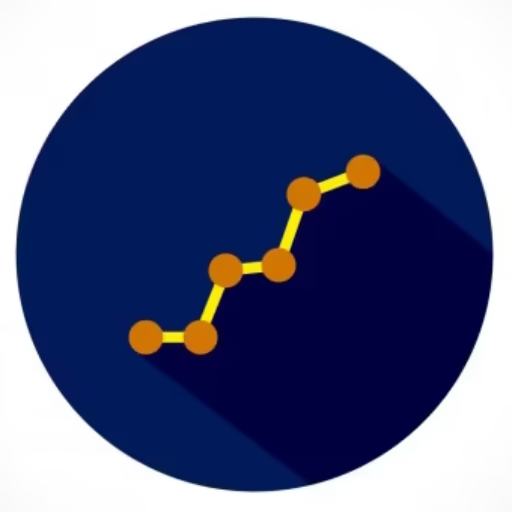
Intraday trading in the Indian stock market offers exciting opportunities for traders looking to capitalize on short-term price movements. As we look ahead to tomorrow’s trading session, identifying the right stocks with optimal volatility, liquidity, and momentum becomes crucial for successful intraday trades.
What Makes a Stock Ideal for Intraday Trading?
Before diving into specific sectors and stock characteristics, it’s essential to understand the key factors that make a stock suitable for intraday trading:
High Liquidity: Stocks with substantial trading volume ensure easy entry and exit without significant price impact.
Volatility: Sufficient price fluctuations provide profitable opportunities throughout the trading day.
Strong Momentum: Stocks showing clear directional trends offer better risk-reward ratios.
Technical Patterns: Stocks exhibiting recognizable chart patterns help in timing entry and exit points.
Sectors Showing Strong Intraday Potential
Banking and Financial Services
Banking stocks typically offer excellent liquidity and respond well to market sentiment, policy changes, and interest rate movements. These stocks often see significant intraday movements due to their large market capitalizations and high institutional participation.
Key Characteristics to Look For:
- Large-cap public sector banks with high trading volumes
- Private sector banks showing momentum breakouts
- Non-banking financial companies with strong technical setups
- Insurance companies responding to sectoral news
Technology and IT Services
The IT sector often shows good intraday momentum due to global market cues, currency fluctuations, and earnings announcements. These stocks are particularly sensitive to overnight developments in international markets.
Trading Opportunities:
- Large-cap IT services companies with strong export revenues
- Mid-cap technology firms showing breakout patterns
- Software companies with recent contract announcements
- Emerging technology stocks with high beta values
Pharmaceutical and Healthcare
Regulatory approvals, clinical trial results, and policy changes create excellent intraday trading opportunities in this sector. These stocks often gap up or down on news, providing clear entry points.
Focus Areas:
- Generic drug manufacturers with FDA approvals
- Specialty pharmaceutical companies
- Healthcare services providers
- Medical device manufacturers
Metals and Mining
Commodity price movements drive these stocks’ intraday performance. Global demand-supply dynamics and currency fluctuations create predictable trading patterns.
Key Segments:
- Steel companies responding to commodity price changes
- Non-ferrous metal producers
- Mining companies with production updates
- Infrastructure-linked metal stocks
Stock Selection Criteria for Tomorrow
Market Capitalization Categories
Large-Cap Stocks (₹20,000+ Crores)
- Offer high liquidity and tight spreads
- Suitable for beginners and conservative traders
- Lower volatility but consistent movements
- Easy entry and exit at desired prices
Mid-Cap Stocks (₹5,000-₹20,000 Crores)
- Higher volatility than large-caps
- Better profit potential per trade
- Require more technical analysis skills
- Moderate liquidity with reasonable spreads
Small-Cap Stocks (Below ₹5,000 Crores)
- Highest volatility and profit potential
- Require advanced trading skills
- Lower liquidity may impact execution
- Suitable for experienced traders only
Price Range Considerations
High-Priced Stocks (Above ₹1,000)
- Smaller position sizes due to higher capital requirements
- Often blue-chip companies with stable patterns
- Suitable for traders with larger capital base
Mid-Priced Stocks (₹100-₹1,000)
- Optimal balance of volatility and affordability
- Allow for reasonable position sizing
- Good for most retail intraday traders
Low-Priced Stocks (Below ₹100)
- Higher percentage movements possible
- Allow larger position sizes with limited capital
- Require careful risk management due to higher volatility
Essential Intraday Trading Strategies
1. Trend Following Strategy
Trade with the prevalent intraday trend for low-risk entry points and high profit potential. Focus on stocks moving in clear directions with strong volume support and minimal resistance levels.
2. Breakout Trading
Identify stocks breaking out of consolidation patterns, support/resistance levels, or technical formations. These breakouts often lead to sustained moves throughout the trading session.
3. Gap Trading Strategy
Focus on stocks opening with significant gaps up or down from the previous day’s close. These gaps often get filled during the session, providing predictable trading opportunities.
4. Volume-Based Selection
Prioritize stocks showing unusual volume spikes compared to their average daily volumes. High volume confirms the sustainability of price movements.
5. News-Based Trading
Monitor stocks reacting to corporate announcements, sectoral developments, or regulatory changes. Quick reaction to news can provide excellent short-term trading opportunities.
Technical Analysis Framework
Key Indicators to Monitor
Moving Averages: Use 9, 21, and 50-period moving averages to identify trend direction and potential reversal points.
Relative Strength Index (RSI): Identify overbought (above 70) and oversold (below 30) conditions for contrarian trading opportunities.
Volume Indicators: Confirm price movements with corresponding volume increases for reliable signals.
Support and Resistance: Identify key price levels where stocks historically reverse or break through.
Chart Patterns
Bullish Patterns: Look for ascending triangles, cup and handle, and flag patterns for upward momentum trades.
Bearish Patterns: Identify descending triangles, head and shoulders, and breakdown patterns for short-selling opportunities.
Neutral Patterns: Rectangle consolidations and symmetrical triangles often precede significant breakout moves.
Risk Management Guidelines
Stop Loss Management: Set stop losses at 1-2% below entry price for long positions and 1-2% above for short positions. Never trade without predetermined exit levels.
Position Sizing: Risk no more than 1-2% of total trading capital per trade. Calculate position size based on stop loss distance and risk tolerance.
Time-Based Exits: Close all positions 15-30 minutes before market close to avoid overnight risks and end-of-day volatility.
Market Condition Assessment: Avoid trading during sideways markets, news events, or high-impact economic announcements unless specifically prepared.
Daily Trading Routine
Pre-Market Preparation (8:30-9:15 AM)
- Check global market cues and overnight developments
- Review economic calendar for important announcements
- Analyze pre-market futures and key stock movements
- Prepare watchlist based on technical and fundamental screening
Opening Session (9:15-10:30 AM)
- Monitor gap openings and initial price action
- Identify stocks with strong opening momentum
- Execute trades based on predetermined strategies
- Avoid impulsive decisions in volatile opening minutes
Mid-Session (10:30 AM-2:30 PM)
- Manage open positions according to plan
- Look for continuation patterns or reversal signals
- Maintain disciplined approach to entry and exit rules
- Monitor broader market trends and sectoral rotations
Closing Session (2:30-3:30 PM)
- Prepare for end-of-day volatility
- Close profitable positions if targets are achieved
- Avoid new positions in the last 30 minutes
- Review day’s performance and document lessons learned
Market Timing Considerations
Optimal Trading Hours
9:15-10:30 AM: Highest volatility period with maximum opportunities but also increased risk.
10:30 AM-12:00 PM: Stable trending period ideal for trend-following strategies.
2:00-3:00 PM: Second wave of volatility often provides good breakout opportunities.
Days to Avoid or Be Cautious
- Settlement days with high delivery volumes
- Days with major economic announcements
- Holiday-shortened trading sessions
- Days with multiple corporate results
Performance Metrics and Evaluation
Key Performance Indicators
Win Rate: Aim for 60-70% winning trades with proper risk-reward ratios.
Risk-Reward Ratio: Target minimum 1:1.5 risk-reward ratio per trade.
Maximum Drawdown: Keep daily losses below 3-5% of trading capital.
Consistency: Focus on consistent small profits rather than seeking home runs.
Daily Review Process
- Document all trades with entry/exit reasons
- Analyze what worked and what didn’t
- Identify patterns in winning and losing trades
- Adjust strategies based on performance data
Important Disclaimers and Risk Warnings
Market Risks: Intraday trading involves substantial risk of loss and may not be suitable for all investors. Price movements can be unpredictable and volatile.
Capital Requirements: Only trade with money you can afford to lose. Never use borrowed funds or money needed for essential expenses.
Skill Development: Successful intraday trading requires significant time investment in learning technical analysis, risk management, and market psychology.
Professional Guidance: Consider consulting with certified financial advisors and experienced traders before beginning intraday trading activities.
Conclusion
Successful intraday trading in the Indian stock market requires a systematic approach combining technical analysis, fundamental awareness, and disciplined risk management. Rather than focusing on specific stock names, concentrate on developing skills to identify stocks with optimal trading characteristics across various sectors and market capitalizations.
The key to long-term success lies in consistent application of proven strategies, continuous learning, and maintaining emotional discipline during both winning and losing streaks. Build your expertise gradually, start with paper trading or small positions, and scale up only as your skills and confidence develop.
Remember that the stock market rewards patience, preparation, and perseverance. Focus on becoming a consistently profitable trader rather than seeking quick gains, and always prioritize capital preservation over aggressive profit-seeking.


